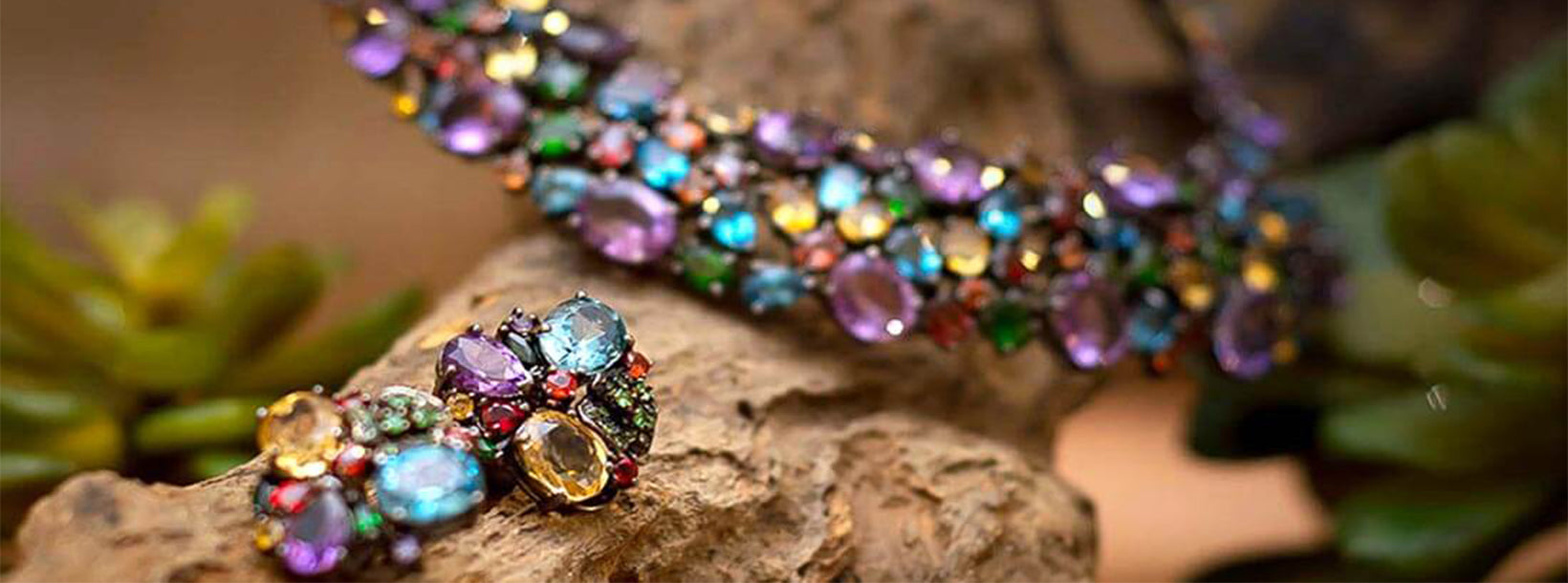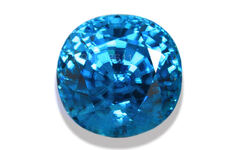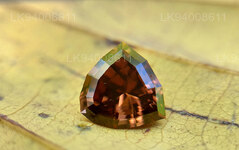
Gems
Sri Lanka’s gem industry has a very long and colorful history. Sri Lanka was affectionately known as Ratna-Dweepa which means Gem Island. The name is a reflection of its natural wealth. Marco Polo wrote that the island had the best sapphires, topazes, amethysts, and other gems in the world.
Zircon
Zircon is a transparent to semi-transparent silicate. Its crystal structure is tetragonal, a short, stocky four-sided prism with a pyramid end. It can contain uranium and have a slight fluorescence. The minimal radioactivity is said to pose no health hazards. Zircon is found as small crystals in metamorphic and igneous rocks, and as alluvial grains in sedimentary rocks.
Zircon comes in many colors and is a gem loved for its high refractive index, which gives it intense brilliance. Zircon has a rare optical quality called birefringence, or double refraction. When light passes through zircon, its rays split in two directions. This gives a high refractive index, a brilliant sheen and fire characterized by flashes of multi-colored light. Its luster is vitreous.
- Varieties: High, medium and low property.
- Sources: Sri Lanka, Burma, Cambodia, Thailand.
- Toughness: Zircon is rated 6 to 7.5 on the Mohs scale. It has fair to good toughness.
- Precautions: Zircon is generally stable when exposed to light, but some heat-treated stones might revert back to their original colors (usually light brown) after prolonged exposure to bright light. Heat can alter the color of some zircon. Zircon is stable when exposed to chemicals.
- Treatments: Heat treatment of the Vietnamese zircon under oxidising conditions produced a lighter but unstable brownish orange colour in the range of 200-500 °C and a stable pale brown colour after heating to 600 °C, whereas treatment under reducing conditions yielded a blue colour after heating to 800-1000 °C.
- History: Zircon is the oldest mineral on Earth, dating back more than 4.4 billion years. Found in the Earth's crust, it's common in most sand and sedimentary deposits, as well as metamorphic rocks and crystallized magma.
- Cuts & Uses: By stone cutters, gemstones such as zircon are cut and polished into fantastic, extremely impressive gemstones with as little weight loss as possible. While some cut names describe the upward shape of the finished gemstone, others refer to the shape and arrangement of the gemstone’s facets. These cuts are also known as gem cut styles. The three most basic cut styles are brilliant, step cut, and mixed cut. For example, a “round brilliant diamond” has a round shape but a brilliant cut. Facet cutters can combine these styles to create many different gem designs.
Explore Gem Mines
-
Explore Gem Mines in Ratnapura from Negombo
Normal fiyat Başlangıç fiyatı: $88.00 USDNormal fiyat -
Explore Gem Mines in Ratnapura from Colombo
Normal fiyat Başlangıç fiyatı: $123.13 USDNormal fiyat$132.60 USDİndirimli fiyat Başlangıç fiyatı: $123.13 USDİndirim -
Explore Gem Mines in Rathnapura from Kalutara
Normal fiyat Başlangıç fiyatı: $152.92 USDNormal fiyat$191.15 USDİndirimli fiyat Başlangıç fiyatı: $152.92 USDİndirim -
Lavinia Dağı'ndan Ratnapura'daki Mücevher Madenlerini Keşfedin
Normal fiyat Başlangıç fiyatı: $178.20 USDNormal fiyat$222.75 USDİndirimli fiyat Başlangıç fiyatı: $178.20 USDİndirim






























